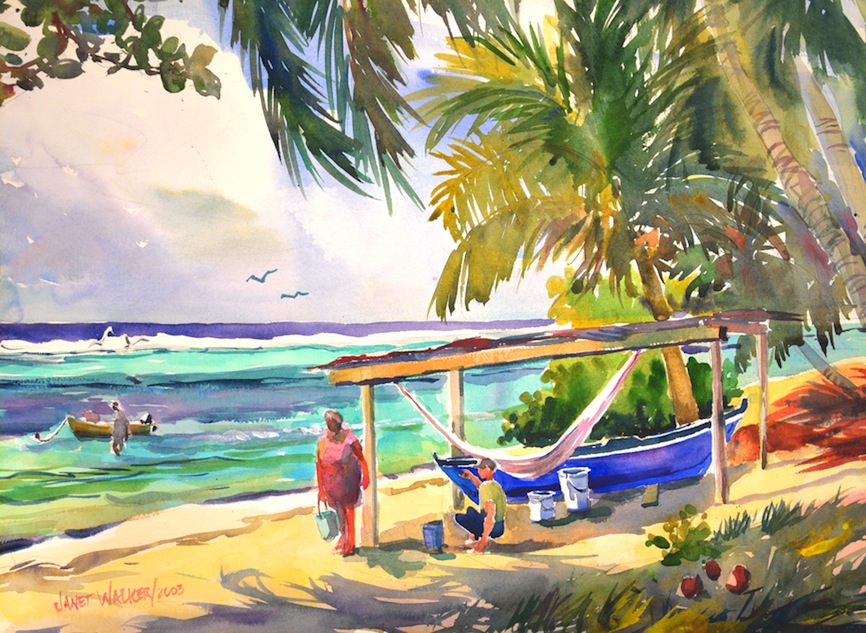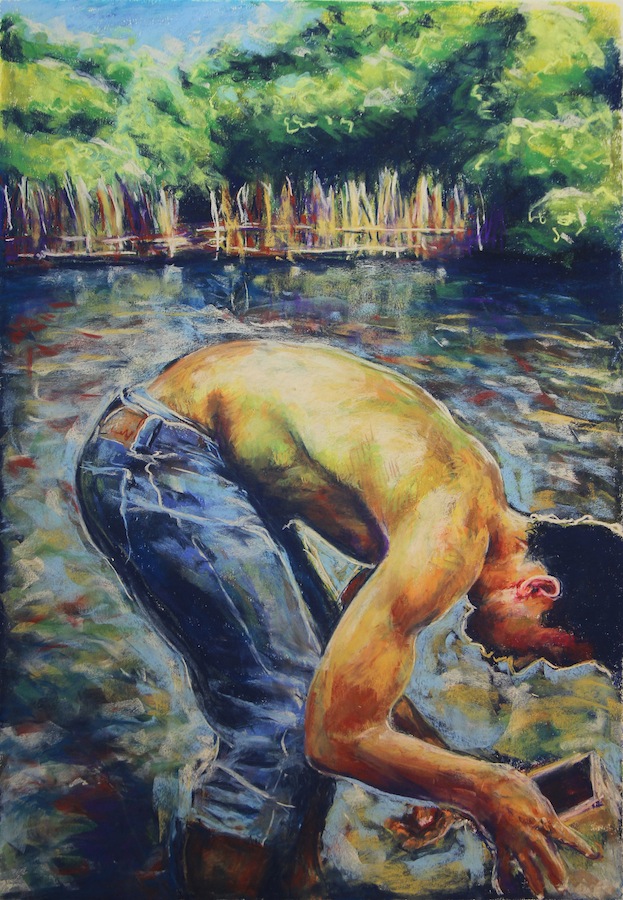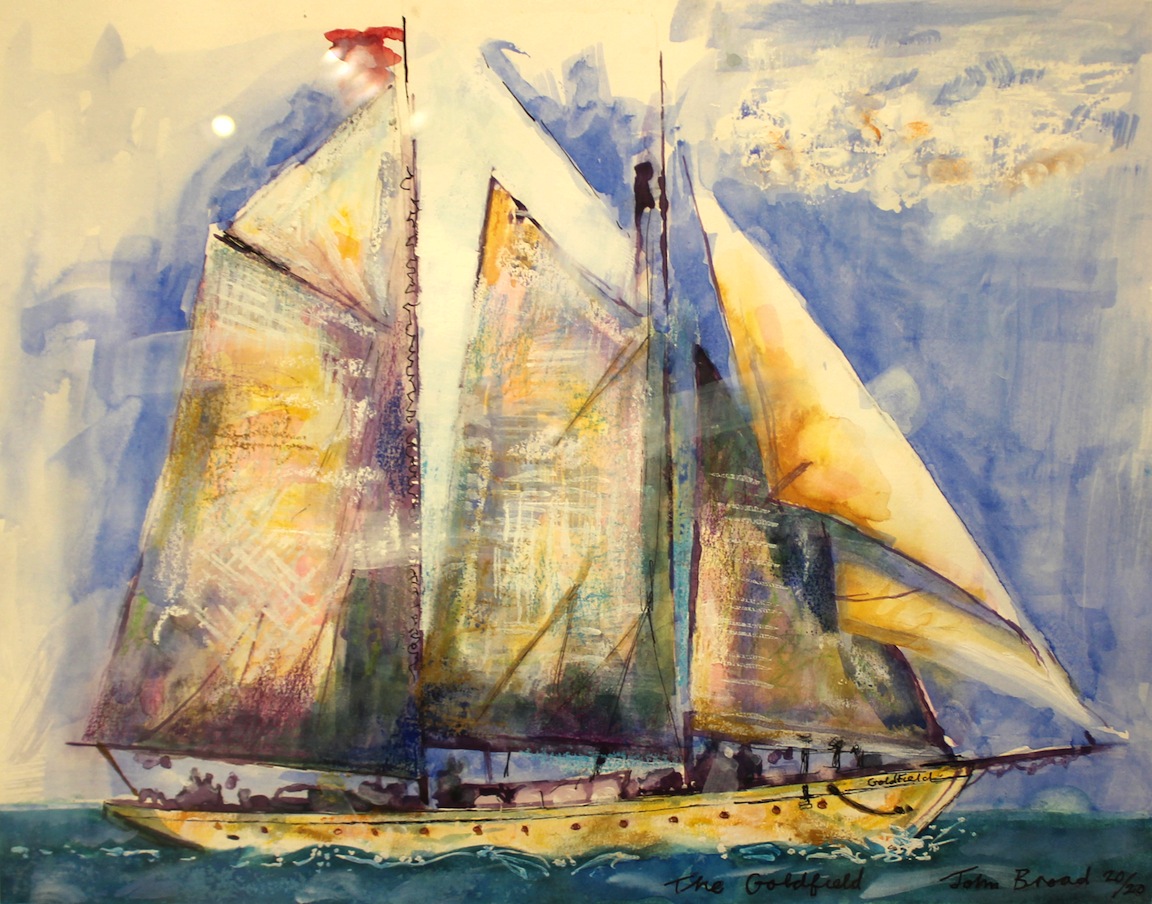Cayman’s Ocean Connection
New Exhibition at the National Gallery Traces Cayman’s Deep Connection to the Ocean
From Cayman Islands National Gallery

Having recently reopened to visitors, the National Gallery of the Cayman Islands has launched a new exhibition of works from the National Collection that explores Cayman’s abiding connection to the sea and maritime culture. Inspired by a quotation from Captain Edward Watson discovered in the Cayman Islands National Archive, “Saltwater in Their Veins” follows a loosely chronological journey that highlights the constant association artists, and our community, in Cayman have held with the marine environment.


Says the curatorial statement, “As an island nation located in the heart of the Caribbean Sea, our identity is intrinsically tied to the surrounding ocean. Historically, the ocean provided us with sustenance and prosperity via seafaring, shipbuilding, and turtling. Later, remittances sent home by seamen during the “Southwell Years” helped lay the foundations of our modern economy. More recently this has been eclipsed by marine tourism and a reliance on the maritime-based import and export of our goods and food. It is an ever- evolving relationship and as we look forward, the question of environmental sustainability comes to the fore. How will the threat of global warming and concerns about rising sea levels shape our future?”


This evolving legacy is examined in the exhibition by forty-five artists and over 80 artworks from the National Gallery collection, including loaned artworks from the Cayman Islands National Museum and Cayman National Cultural Foundation. The first corridor explores Cayman’s early maritime heritage highlighting the traditions of shipbuilding, thatch weaving and rope making through work by ‘intuitive’ (self-taught) artists like Gladwyn “Miss Lassie” Bush, along with an early pioneer of Cayman’s formal visual art history, Charles Long. The exhibition continues in corridor two with the shift in Cayman’s economy away from a direct reliance on maritime activities of turtle fishing and merchant shipping towards the emerging marine-based tourism and financial services industries that accelerated in the 1980s. The artists featured here work primarily in Realism and focus on capturing a moment in Caymanian history that was rapidly disappearing and reflect an abiding sense of nostalgia for the ‘Islands Time Forgot’.


Moving on to the 1990s and the creation of groups like the Native Sons, we see artists begin to consciously re-establish their own personal connections to Caymanian history and cultural heritage. Drawing heavily on archival material as inspiration, Cayman’s proud maritime history began to remerge strongly in their work through the depiction of schooners, catboats, along with other iconic references such as nautical charts and mapping.
After the millennium Caymanian artists continue to explore their connection to maritime culture, adopting a variety of new media and techniques to address this familiar subject matter. From the use of canvas sailcloth as a painting support, to objects that variously evoke or directly allude to the material universe of maritime culture, or the merging of past and present in contemporary photographic collage, Caymanian artists continue to find new resonances in the revival of historical subjects, making a compelling case for the persistent relevance of that history in the digital age of our own contemporary era. Within this dialogue, the sea and our maritime heritage remain incredibly generative subjects, reflecting a deep-rooted cultural connection to the ocean but instead of looking to the past for inspiration, these final works reflect a growing sense of ecological awareness and raise questions of future sustainability.
“Loosely assembled by decade, their work traces a historical and stylistic journey to reflect a complex relationship from a variety of historical, cultural, economic and ecological perspectives,” says NGCI Director and Chief Curator Natalie Urquhart. “Bridging past and present, they reflect Cayman’s constant yet ever-changing relationship to our marine environment and articulate new meanings for contemporary Cayman’s maritime identity – highlighting the responsibility we all share as stewards of our precious natural environment for future generations.”
The exhibition is one of three currently on display at the National Gallery with viewings based on a time entry system to ensure social distancing measures are adhered to. Admission is free and can be booked via https://www.nationalgallery.org.ky/visit/welcome-back-to-ngci/timed-booking-entry-form/ or by phone at (345) 945 8111. Visitors can book a tour of the exhibition or take a self-guided walk through using the descriptive labels that elaborate the historical and cultural context of the artwork on display. For those wishing to view from home, the exhibition is also available online as a virtual experience via https://www.nationalgallery.org.ky/see/virtual-tours/.
IMAGES:
Caption 1: Exhibition view of the contemporary art corridor with work by Wray Banker and Frans de Backer on view.
Caption 2: Janet Walker, Morning Activity on East End Beach (2003)
Caption 3: Simon Tatum, Looking Glass (2015)
Caption 4: John Broad, The Goldfield (2020)
#######
About the National Gallery of the Cayman Islands
Established in 1996, the National Gallery of the Cayman Islands (NGCI) is the country’s leading visual arts museum and education centre, charged with promoting and encouraging the appreciation and practice of the visual arts in the Cayman Islands. This mission is achieved through exhibitions, education/outreach programmes, school tours, community festivals, and ongoing research projects. Holding up to six exhibitions annually at our central exhibition space, and satellite venues around Grand Cayman and the Sister Islands, the curatorial team strives to create a balance between exhibitions of quality Caymanian artwork with art from further afield. This is achieved by working with a broad cross-section of artists and ranging from site-specific work to more traditional gallery-based projects.





